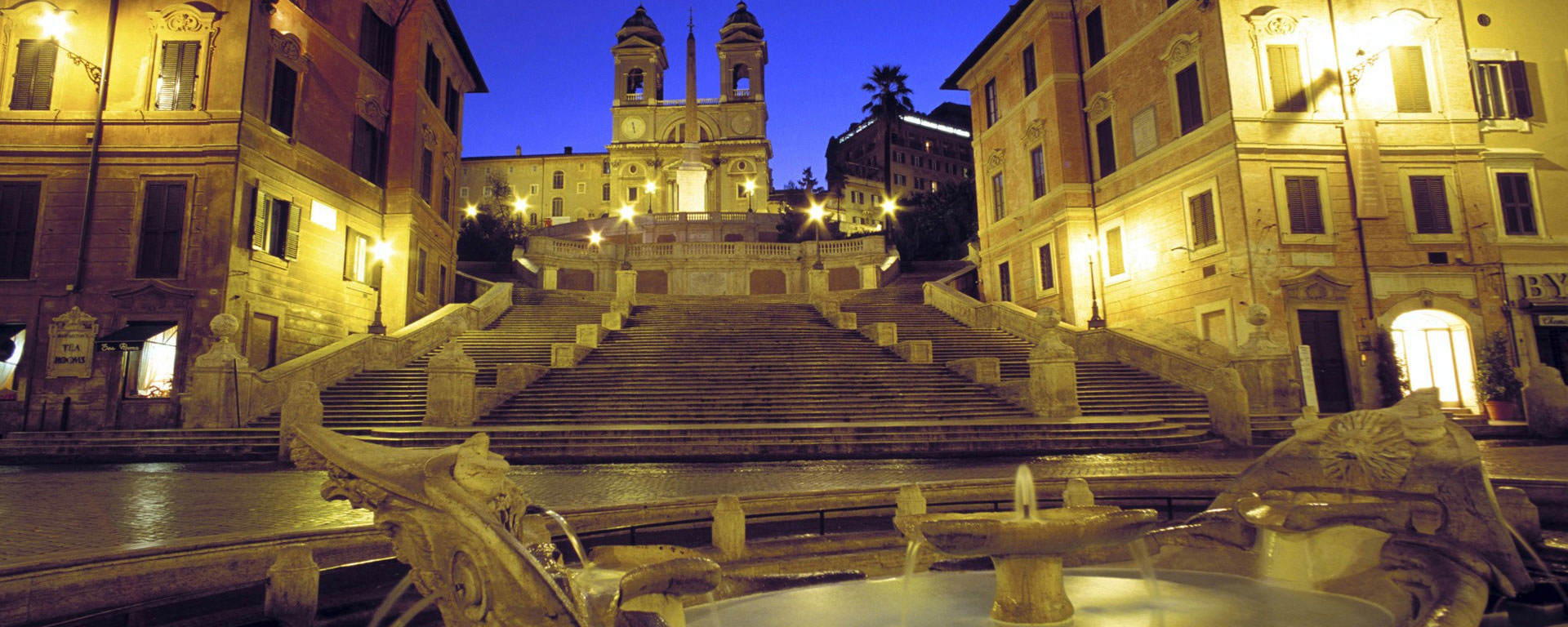
The Spanish Steps
The Spanish Steps are a set of 138 travertine steps that were built to link the Spanish Embassy to the Vatican in Piazza di Spagna, to the Church convent of Trinita dei Monti on top of the hill.
 The Church, the Trinity Church of the hill in English, was French Speaking and served the French Community of Rome. It was paid for by King Charles the eighth of France in 1502.
The Church, the Trinity Church of the hill in English, was French Speaking and served the French Community of Rome. It was paid for by King Charles the eighth of France in 1502.
The steps took two and half years to build from 1723 to 1725 and were paid for by a French Diplomat named Etienne Gueffier, who left the money in his will.
The architect was the Italian, Francesco De Sanctis, who had also designed some minor fountains here in Rome.
spanish steps
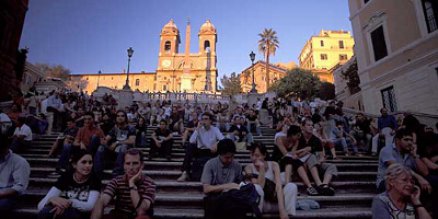 Initially there was only a muddy slope here and a great debate emerged as to how to fill the space.
Initially there was only a muddy slope here and a great debate emerged as to how to fill the space.
Obviously steps would have to be used as they didn’t have elevators back then and the project was put out to tender.
The project cost 20,000 scudi, a huge amount of money for the time; approximately twenty million Euro in today’s money, although inflation renders such comparisons ineffective.
De Sanctis won the competition and completed the project ahead of schedule.
the spanish steps rome
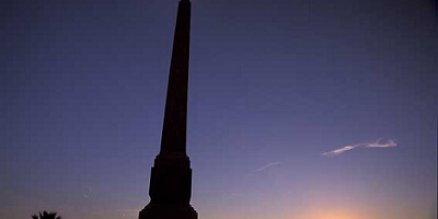 In Roman times this area was part of the Pincian hill, which contained gardens and was host to Rome’s upper middle class.
In Roman times this area was part of the Pincian hill, which contained gardens and was host to Rome’s upper middle class.
Today this is one of the richest areas in Rome, so the tradition has remained.
During the month of May, flowers are laid out and placed here, every year.
The Spanish Steps are a favourite place to eat lunch (for which you can now be fined), buy flowers from the flower markets or get your wedding photographs taken.
rome italy spanish steps
The English Ghetto
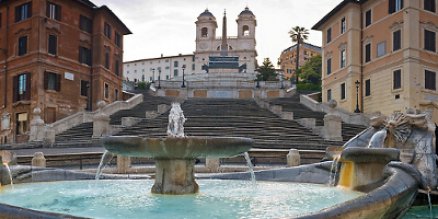 After the steps were built in 1725, this area was known as the “Ghetto del Inglesi” or English Ghetto as so many English people stayed here on their journey through Rome.
After the steps were built in 1725, this area was known as the “Ghetto del Inglesi” or English Ghetto as so many English people stayed here on their journey through Rome.
They would spend all their money apparently getting drunk and would eventually end up here hassling new comers from England for money, according to reports.
This is confirmed by the presence of the All Saints Anglican or English Episcopalian church on Via del Babuino a few blocks away.
Even today to the left of the steps is a teahouse, very uncommon in Rome. Romans drink innumerable cups of coffee; they don’t really drink tea.
This tea house is Babington’s Tea Rooms, founded in 1894 by a member of the Babington family, who had travelled to Rome and missed English tea, as the Italians only drank coffee.
An ancestor of theirs, Anthony Babington had been hung, drawn and quartered for attempting a Catholic conspiracy against Queen Elizabeth the first.
In 1928 the business was passed over to Lady Babington’s assistant and even remained open during the Second World War.
spanish steps rome italy
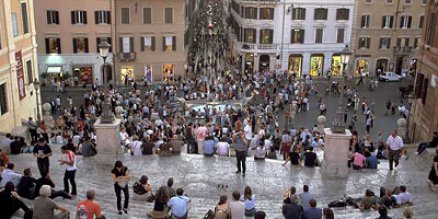 Two notable Englishmen also lived on the other side of the steps.
Two notable Englishmen also lived on the other side of the steps.
They were the Poet John Keats who wrote Ode to a Grecian Urn and Percy Bysshe Shelly who wrote Ode to the West Wind; he was also married to Mary Shelley who wrote Frankenstein.
In 1820 Keats was diagnosed with tuberculosis and ordered to spend time in Rome by his doctor, as the warm climate would help to improve his condition.
He would die six months later in 1821. He called this period, living in the house to the right of the steps which currently holds his Museum, a “posthumous life”.
His friend Shelly came to visit him as did Lord Byron. All three men were English poets of the Romantic era.
Byron actually lived across the road in number 66.
Keats is buried in Rome in the Non-Catholic Cemetery of Rome which is beside the Piramide district.
spanish steps rome
 Trinita dei Monti
Trinita dei Monti
The Trinity Church of the hill (in English) serves French community here in Rome.
In 1494 Francis of Paola, a hermit from Calabria, bought a vineyard from the patriarch of Aquileia, Ermolao Barbaro, and then obtained permission from Pope Alexander VI to establish a monastery for the Minimite Friars.
In 1502, Louis XII of France began construction of the church of the Trinita dei Monti next to this monastery, but no substantial work occurred until the 1580s when Pope Sixtus V created the Via Sistina road connecting the site to Piazza Barberini.
spanish steps roma
 Trinita dei MontiThe architect was most likely Giacomo della Porta with the assistance of Domenico Fontana.
Trinita dei MontiThe architect was most likely Giacomo della Porta with the assistance of Domenico Fontana.
These two men were assistants of Michelangelo and were the team that actually carried out the Dome of Saint Peter’s.
When Napoleon occupied of Rome in the early 1800s he took most of the art treasures from the church back to Paris.
These were returned to Rome by the French monarchy after the restoration of the Bourbon family to power.
At the very top of the steps, in front of the church, we have a fake Obelisk.
This is a copy of the one in Piazza del Popolo.
It is thought it was made during the time of the Roman Emperor Hadrian who served in the early second century AD.
It previously sat in the Sallustian Gardens where the US embassy is currently located.
It was moved here in 1789 on the orders of Pope Pius VI.
fountain near spanish steps
 Il Barcaccia
Il Barcaccia
This fountain at the bottom of the steps is the Ugly Boat or IL Barcaccia in Italian.
On Christmas day in 1598 the Tiber had the worst recorded flooding in history.
This part of Rome was flooded to a height of twenty five feet. During the flood, a weird looking old boat landed in this area. According to sources, Pope Urban VIII (a very important Pope from the Barberini family) saw and was impressed by it.
He commissioned Pietro Bernini, father of the more famous Gianlorenzo, to build a fountain resembling it.
It was his last work, done in 1629, one hundred years before the Spanish Steps were built.
The fountain has aspects of the Barberini crest, the bees and the sun.
The source of the water is an offshoot of the Acqua Vergine or Virginal Waters, a naturally occurring underground water source, which also supplies the Trevi Fountain.
The water pressure in this area was not great so the father and son team decided to build the boat wide and low to compensate.
spanish steps italy
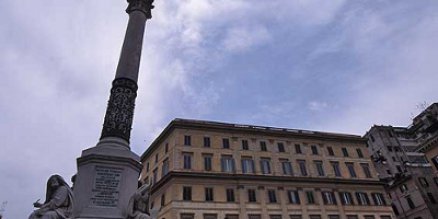 Column of the Immaculate Conception
Column of the Immaculate Conception
To the right of the steps within sight is the column of the immaculate conception.
The immaculate conception is a Catholic doctrine which states that Mary, the mother of Jesus, was born without original sin.
This doctrine is often confused with virginal conception which almost all Christians believe in; that Mary was chaste before she gave birth to Jesus.
According to the Catholic Church, all humans are born with automatic guilt, as a result of Adam and Eve being expelled from Eden, called original sin.
God intervened while Mary was in the womb so she would have no original sin so when she gave birth to Jesus he would be perfect.
This column is an original Roman column taken from the Roman Forum.
The statue of Mary was done in 1857 by Luigi Poletti, a renowned sculptor of the time.
This idea was believed by many Catholics but not all until Pope Pius the ninth made it dogma or church law in 1854.
This column was put here three years later and unveiled on December 8th. December 8th is the feast of the Immaculate conception and gives most Catholics a day off to go Christmas shopping.
Every year on December 8th, the Pope comes here and the firemen of Rome get out their electronic ladder and place a new plastic wreath on the top of the column.
All the journalists gather round with the TV cameras and when the wreath is on, the Pope says a brief prayer, they all clap and then go home.
The whole thing takes about ten minutes. Every Pope has done this every year dating back to 1854.
The four statues which sit around the base depict Moses, David, Isaiah and Ezekiel.
Interspersed with them are scenes from the life of Mary. These show Mary being given Jesus by the Holy Spirit, you can see a dove, the holy spirit, shining rays in to her.
spanish steps tour
The Spanish Steps is a great tourist attraction being free, beautiful and near its own Metro stop Spagna.
It is in walking distance to Piazza del Popolo, the Via del Corso shopping street and other attractions in the city.
If you would like to take a walking or driving tour of the squares of Rome including the Spanish Steps you can contact me via the menu.
3 hour Walking Tour of the Piazzas and Fountains of Rome Italy
Rated 5.0/5 based on a selection 10 customer reviews out of thousands.
